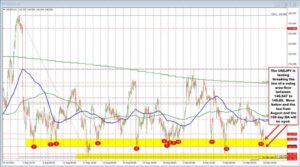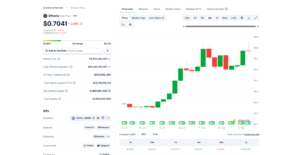Yen Surges on Hawkish BoJ Outlook. Forecast as of 19.08.2025

The divergence in monetary policy between the Fed and the Bank of Japan has triggered a sell-off in the USDJPY pair. However, bulls may counterattack until the BoJ hikes the overnight rate and the Fed cuts the federal funds rate. Let’s discuss this topic and make a trading plan.
The article covers the following subjects:
Major Takeaways
- The US believes that the Bank of Japan is lagging behind the curve.
- The Nikkei 225 index is outperforming US stock indices.
- As long as the interest rate differential remains wide, the yen will not rise.
- Long trades on the USDJPY can be considered in the short term if the quotes pierce 148.1.
Weekly Fundamental Forecast for Yen
In 2025, markets are more sensitive to Donald Trump and his administration’s speeches than to macroeconomic statistics. Scott Bessent’s remarks reminded investors that the yen should strengthen against the US dollar. However, no one knows exactly when the USDJPY will decline.
If tariffs have a temporary impact on Forex, then divergence in monetary policy is a factor that has been in place for decades. When Scott Bessent says that the Bank of Japan is lagging behind the curve by raising rates too slowly, one cannot help but recall the downward trend in the USDJPY. Moreover, the US finance minister, citing economic models, argues that the Fed rate should be 150–175 bps lower than it is now.
The US Treasury noted that in response to economic fundamentals, including growth and inflation, the Bank of Japan’s monetary tightening should continue. This will support the normalization of the yen against the US dollar. Indeed, GDP growth accelerated to 1% in the second quarter, and consumer prices remained above the 2% target for a long time, dictating the need to raise the overnight rate.
Japan Real GDP
Source: Bloomberg.
Japan Consumer Price Index
Source: Bloomberg.
Following Scott Bessent’s comments, the likelihood of the BoJ raising its overnight rate in October rose from 39% to 49%. The derivatives market continues to suggest that the Japanese regulator will increase the rate in December, estimating a 65% probability.
Meanwhile, bears are also supported by the outperformance of Japanese stock indices relative to their US counterparts. The Nikkei 225 is surging due to increased capital flows from North America to Asia.
Stock Indices’ Performance
Source: Bloomberg.
However, Japanese Economy Minister Ryosei Akazawa has stated that Scott Bessent did not ask the BoJ to raise rates. The US Treasury Secretary has also mentioned that he did not provide any specific recommendations to the Fed. He merely alluded to economic models. Against this backdrop, investors have set aside the issue of monetary policy divergence, which has led to a consolidation in the USDJPY pair.
Until October, it is anticipated that the federal funds rates will be 350–400 bps higher than the Bank of Japan’s overnight rate. Such a significant differential could open up ample opportunities for carry traders and trigger a pullback in USDJPY quotes, especially if Jerome Powell decides to maintain the Fed’s cautious stance at Jackson Hole. At this time, it is not clear if the cycle of monetary expansion will continue after September.
Weekly USDJPY Trading Plan
In this regard, the Fed chair’s readiness to signal a dovish shift will be crucial. If this does not happen, the risks of a pullback in the USDJPY will increase, and a breakout of the resistance level of 148.1 could be an opportunity to open long trades in the short term. However, if bulls fail to push the price above this key level, short trades can be considered again.
This forecast is based on the analysis of fundamental factors, including official statements from financial institutions and regulators, various geopolitical and economic developments, and statistical data. Historical market data are also considered.
Price chart of USDJPY in real time mode
The content of this article reflects the author’s opinion and does not necessarily reflect the official position of LiteFinance broker. The material published on this page is provided for informational purposes only and should not be considered as the provision of investment advice for the purposes of Directive 2014/65/EU.
According to copyright law, this article is considered intellectual property, which includes a prohibition on copying and distributing it without consent.






